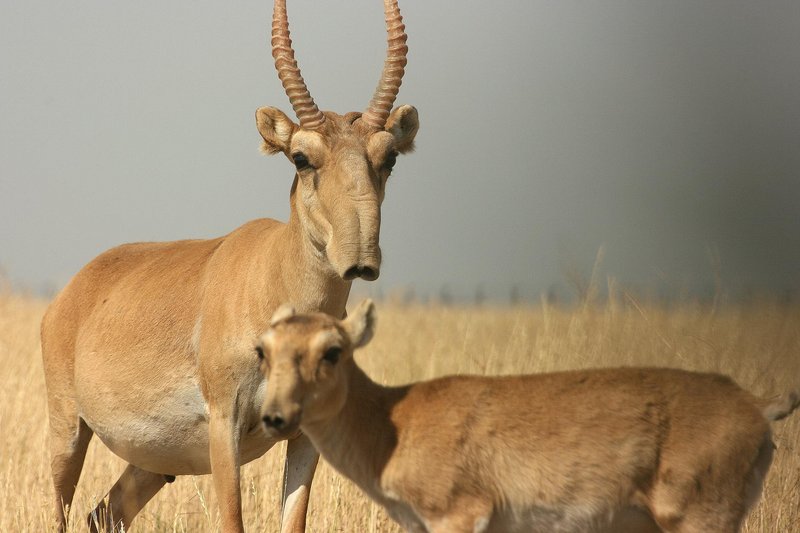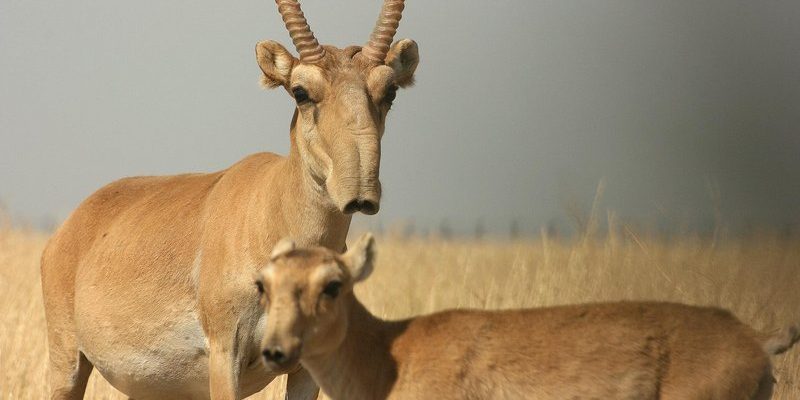
Imagine a creature that looks like it just stepped out of a sci-fi movie. That’s the Saiga Antelope for you! With its bulbous nose and impressive horns, it’s truly a sight to behold. This fascinating animal roams the steppes of Central Asia, where it has adapted to some of the most challenging environments. But don’t let its kooky appearance fool you; the Saiga Antelope is an incredibly resilient species, albeit one that is facing serious threats in today’s world.
Why is this animal so special? Well, aside from its unique looks, the Saiga Antelope plays a vital role in its ecosystem. It helps maintain vegetation balance and serves as prey for various predators. Unfortunately, its population has been declining dramatically due to poaching and habitat loss. Learning about the Saiga Antelope is crucial, not just because it’s interesting, but also because it raises awareness about conservation efforts to protect this unique animal.
Physical Characteristics
The Saiga Antelope has some remarkable physical traits that set it apart from other antelopes. One of the most striking features is its oversized, flexible nose. This unique adaptation allows the antelope to filter out dust and regulate its body temperature during the scorching summer months. It’s almost like nature’s own air conditioning system!
In terms of size, Saiga Antelopes are relatively small compared to other species. Males typically weigh between 90 to 150 pounds, while females are slightly smaller. Their coat changes color with the seasons, turning a light tan in the summer and a darker shade in the winter, helping them blend into their surroundings. Their long legs give them the ability to run at speeds of up to 50 miles per hour, making them adept at escaping predators.
Diet and Feeding Habits
When it comes to food, the Saiga Antelope is a herbivore, primarily feeding on grasses and leafy plants. During the warmer months, they graze on fresh shoots, which provides essential nutrients. In winter, their diet shifts to more fibrous vegetation, allowing them to adapt to changing conditions. They’re perfect foragers, often traveling long distances to find food.
Interestingly, the Saiga has a distinct feeding technique. They often graze in large groups, called herds, which can consist of hundreds of individuals! This social behavior helps them spot danger more effectively, as there are many eyes on the lookout for predators such as wolves and leopards. This communal aspect not only enhances their survival chances but also encourages a sense of community within the herd.
Habitat and Range
The Saiga Antelope primarily inhabits the vast steppes and semi-arid regions of Central Asia, including Kazakhstan and Mongolia. These areas are characterized by wide-open spaces, which allow the antelope to roam freely. The steppe ecosystem is vital for their survival, providing the right conditions for grazing and shelter from predators.
During the summer months, Saiga Antelopes can be found in the grasslands, where they can easily access food and water. However, as winters set in, they migrate to slightly warmer areas to escape the harsh conditions. Unfortunately, human activities such as agriculture and urbanization have dramatically reduced their natural habitats, making it increasingly difficult for these animals to find safe spaces to thrive.
Conservation Status
The current conservation status of the Saiga Antelope is alarming. Officially classified as critically endangered, their population has seen a staggering decline of over 95% in the last few decades due to a combination of poaching and habitat loss. Poachers target these animals for their horns, which are highly valued in traditional medicine, despite having no proven health benefits.
Conservation efforts are being made to protect the Saiga Antelope. Organizations are working tirelessly to create protected areas and educate local communities about the importance of this unique animal. Increased patrolling of habitats has also been implemented to combat poaching. Nonetheless, the survival of the Saiga Antelope remains precarious, and efforts must intensify to ensure their future.
Interesting Facts
| Scientific Name: | Saiga tatarica |
| Weight: | 90 – 150 pounds |
| Speed: | Up to 50 miles per hour |
| Lifespan: | 6 – 10 years in the wild |
| Habitat: | Steppes and semi-arid regions of Central Asia |
| Diet: | Grasses and leafy plants |
| Population: | Estimated at around 50,000 individuals |
Role in Ecosystem
The Saiga Antelope plays a crucial role in its ecosystem, much like a gardener tending to a garden. By grazing on grasses, they help to maintain the balance of plant life, allowing various species to coexist. This grazing behavior prevents overgrowth and promotes healthy plant life, ensuring the grasslands remain vibrant.
Moreover, as prey for larger predators, Saiga Antelopes are part of the food chain. Their presence helps to sustain the populations of these predators, contributing to biodiversity. This interconnectedness showcases the importance of every species within an ecosystem, illustrating that the loss of one can have a ripple effect on others.
How You Can Help
You might be wondering, “What can I do to make a difference for the Saiga Antelope?” Well, there are several ways to help! First, consider supporting organizations that focus on wildlife conservation. Donations can go a long way in funding protective measures, like anti-poaching patrols and habitat restoration projects.
Additionally, raising awareness about the Saiga Antelope through social media or community events can help spread the word. The more people know about these animals and their plight, the better chance we have of protecting them. Every little bit counts when it comes to conservation!
FAQ
What does a Saiga Antelope look like?
The Saiga Antelope is known for its distinctive appearance, characterized by its large, bulbous nose and curved horns. Males usually have larger horns that can reach impressive lengths, creating a striking profile. Their coat color varies with the seasons, changing from light tan in summer to a darker shade in winter, which helps them blend into their environment.
Where do Saiga Antelopes live?
Saiga Antelopes primarily inhabit the grasslands and semi-arid regions of Central Asia. Countries such as Kazakhstan, Mongolia, and parts of Russia are home to these unique animals. They are well-adapted to roam large distances in search of food and water, often migrating to find suitable habitats during seasonal changes.
Why are Saiga Antelopes endangered?
The Saiga Antelope is critically endangered mainly due to poaching and habitat loss. Poachers target them for their horns, prized in traditional medicine, despite having no proven health benefits. Additionally, habitat destruction due to agricultural expansion and urban development has further reduced their population, making their survival increasingly precarious.
What is being done to protect Saiga Antelopes?
Conservation organizations are actively working to protect the Saiga Antelope through various initiatives. These include establishing protected areas, creating awareness campaigns, and increasing anti-poaching patrols. Efforts are also focused on involving local communities in conservation, helping them understand the value of preserving this unique species.
How fast can a Saiga Antelope run?
Saiga Antelopes can run at impressive speeds of up to 50 miles per hour, making them one of the fastest antelopes in the world. Their long legs and nimble bodies allow them to escape predators quickly, which is essential for their survival in the wild.
What do Saiga Antelopes eat?
As herbivores, Saiga Antelopes primarily feed on grasses, herbs, and leafy plants. Their diet changes with the seasons, as they graze on fresh shoots during warmer months and switch to more fibrous vegetation in winter. They are also known to travel long distances in herds to find food and water.
How long do Saiga Antelopes live?
The average lifespan of a Saiga Antelope in the wild is between 6 to 10 years. However, factors such as predation and environmental stress can impact their longevity. In protected environments, they may live longer, but the wild poses challenges that can cut life short.
Are Saiga Antelopes social animals?
Yes, Saiga Antelopes are quite social creatures! They are often found in large herds, which can consist of hundreds of individuals. This social structure not only helps them forage more effectively but also increases their chances of spotting predators, allowing them to stay vigilant and safe.
Can Saiga Antelopes adapt to changing climates?
Saiga Antelopes have shown some level of adaptability to their environment. However, rapid climate changes and extreme weather conditions pose significant challenges to their survival. While they can migrate to find suitable habitats, ongoing habitat loss and human development hinder their ability to adapt effectively.
How can I support Saiga Antelope conservation efforts?
You can support Saiga Antelope conservation by donating to wildlife organizations focused on their protection. Additionally, spreading awareness through social media and community engagement can help draw attention to their plight. Every small action contributes to the overall effort of preserving this unique species for future generations.

